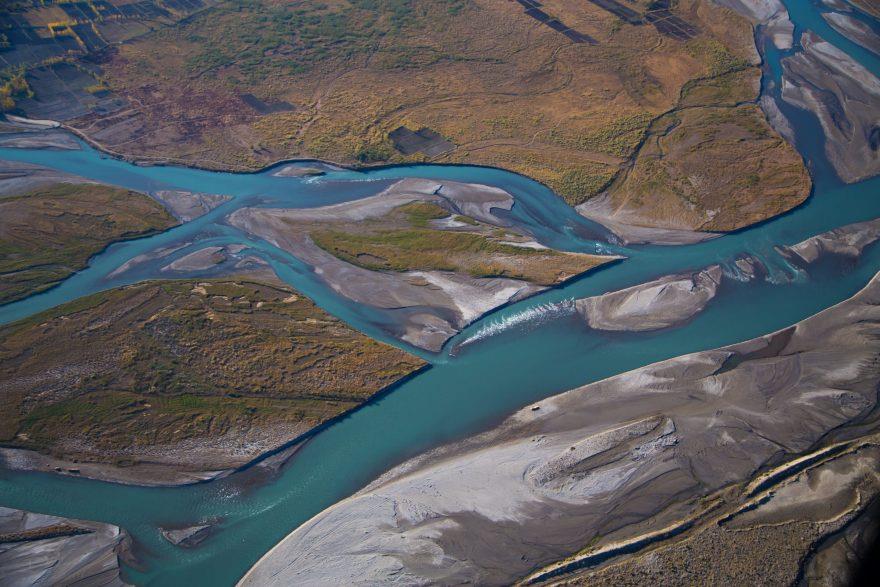
Requirement Of Dams On Kabul River For The Better Management Of Afghanistan's Water: Opinion
By: Mirza Ahmad Ebrahimi : The author is a PhD research scholar in India.
Afghanistan has abundant water resources. 80% of such resources come from surface water that flows from snowfields and glaciers in the Hindu Kush and Himalayan mountains. The country with a total of 75 billion cubic meters of water per annum, surface water capturing 55 billion cubic meters, and groundwater making 20 billion cubic meters, is able to consume 27% of its water and the remaining 73% flows to the neighboring countries.
Afghanistan as an agro-economic oriented country can reach self-sufficiency in food security by managing and utilizing these water resources which flow to its neighboring countries for free. Likewise, there is a need to adopt a systematic approach to water management in the country. Despite ample water resources, Afghanistan has been categorized among the high-risk country in the Water Stress Index which shows that the country is incapable to consume its annual water supplies generated from precipitation, rivers, and groundwater. In fact, the construction of Dams along the rivers is one of the sustainable approaches to water management in the country.
The Kabul River rises in the Hindu Kush mountains, and receives substantial flows from several rivers which measures 700 kilometers long, it flows 460 kilometers inside Afghanistan and 240 kilometers in Pakistan. The river passes through Kabul and is augmented with the Logar river in Shina, the Panjshir river magnifies it in Sorobi, then it joins Alingar and Kunar rivers in Jalalabad. In Pakistan, it flows through Peshawar, Charsada, and Nowshera cities which finally drain into the Sindh river in Punjab's Attock district.
Kabul River with a size of more than 76 thousand kilometers contributes 26% flow and 12% coverage to Afghanistan's freshwater enjoying strategic and economic momentousness which devotes a fourth of Afghanistan's aquaculture and forms large drainage of the eastern provinces of Nangarhar, Kunar, Laghman, Logar, Kabul, and Panjshir before it flows into Khyber Pakhtunkhwa in Pakistan.
Years of internal conflicts in the country wasted the opportunity to draw a water management system in Afghanistan in which almost 12 billion cubic meters of the Kabul river flow into Pakistan free of cost every year. Pakistan benefits from the water-flow more than Afghanistan; Pakistan already constructed a number of barrages, irrigation canals, and other infrastructure on its section of the Kabul River. Warsak Dam is a clear example in the Peshawar valley, 20 kms on northwest of the city.
Let us calculate the economic value of Afghanistan's water which pour into Pakistan for free. The international charges for every cubic meter of water start from 0.5 cents to 2 dollars, if we take 1 dollar as an average price, Afghanistan's water which is worth around 12 billion dollars, irrigates Pakistan's agricultural land annually without receiving anything in return. On the other hand, four-fifths of Afghanistan's population of 38 million depend on farming and horticulture. The recent drought and climate changes have badly damaged the sector, reducing the cultivated area from 10.8 million acres in 1978 to 4.6 million acres in 2002 with further reduction in the recent decade.
Despite Afghanistan's huge but undeveloped mineral resources, agriculture remains the mainstay of its economy, exports, food security, and livelihoods in rural areas for its residents. More importantly, around six million residents of Kabul and Jalalabad depend on the Kabul river for all their water needs. Indeed, such waters can be used for hydropower plants to produce energy as well. Hydropower is considered one of the most economical and least polluting sources of energy.
Afghanistan suffers from a severe shortage of electricity which imports . Earlier the feasibility studies of more than 20 small and medium-sized hydropower projects including a dozen dams in the Kabul Basin were completed, and funds should be mobilized to make such a plan go ahead. Required funds for the aforesaid purpose can be raised in the form of grants from friendly countries, loans from banks, or the use of suitable commercial models, preferably the Public Private Partnership (PPP) one.
Constructing barrages on the Kabul River is associated with many supremacies, it stores water when precipitation is at its peak, suppress flood, waters agriculture, and produces competitive, and clean energy. Positively, a significant reduction in surface water, including the flows of Kabul, would seriously threaten Pakistan's agriculture, which contributes more than a fifth of its GDP, and can be used as leverage of pressure against the Pakistan government for the national interest. Water is one of the main wheels for developing the economy and bringing the nation out of poverty, hence its free flow must be managed through a proper water management system and approach.

Legal Disclaimer:
MENAFN provides the
information “as is” without warranty of any kind. We do not accept
any responsibility or liability for the accuracy, content, images,
videos, licenses, completeness, legality, or reliability of the information
contained in this article. If you have any complaints or copyright
issues related to this article, kindly contact the provider above.


















Comments
No comment